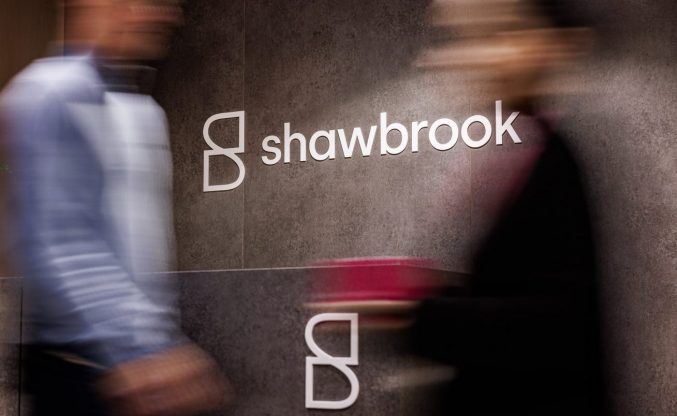Bridging Index – Sector posts significant recovery in Q4 2016 following post-Brexit dip
By Bridging Loan Directory
Gross annual bridging lending decreased to £4.0bn in December, as the market took stock of the post-Brexit climate, according to the latest West One Bridging Index.
As lenders reviewed books and risk positions, and some smaller borrowers paused amid the uncertainty engendered by the Brexit vote, there was a significant drop in lending in Q3 of 2016. As the ASTL reported, gross lending figures for their members fell 17% to £613.1m from £742.6m in Q2. That drop is reflected in the decline in annualised gross lending for the total market, to just over £4bn.
However, evidence suggests that Q4 saw the sector post a significant recovery quarter-on-quarter, with the market estimated to have surpassed levels seen in Q1. The ATSL reported a 26% increase in Q4 lending compared with Q3, in line with that recovery.
In Q3, while property professionals continued to borrow and regulated bridging saw little change, smaller property investors did step out of the market. This not only reduced gross lending, but also drove an uptick in redemption volumes, together leading to significant liquidity being available during Q3. But those smaller investors have come back progressively during Q4, as confidence returned and that liquidity has come back out of the market over Q4. This indicates a significant recovery through the last quarter of 2016. Indeed, West One had record levels of monthly lending in November 2016.
As a result, we anticipate that the positive Q4 will continue into a return to growth in annualised lending in the next quarter.

Recent data from the wider property sector also points towards a return to growth for the market in Q4: HMRC’s property transaction data shows that the seasonally adjusted estimate of the number of non-residential property transactions increased by 2.8% between November 2016 and December 2016. This figure is 6.2% higher compared with the same month in 2015.
Similarly, the Council of Mortgage Lenders estimated gross lending for 2016 at £246bn; the forecast for 2017 is £248bn, followed by a slightly higher rise in 2018 to £252bn. Net lending is expected to be £30bn this year and next.
Annual house prices have also continued to increase, with the Halifax House Price Index citing the growth rate at 6.5% in December 2016. This reflects the shortage of properties available on the market, as well as an upturn in consumer confidence. Despite the rate of house price growth expected to slow in 2017, the consensus amongst industry experts is that there will still be growth, with some industry experts expecting that they will increase by 4%. This connection between house prices and volumes of lending is crucial, as rising house prices can attract developers to invest in the property market.
So despite heightened economic uncertainty, the property market’s resilience is such that conditions are favourable for the bridging market continuing its expansion in the year ahead.
Stephen Wasserman, Managing Director of West One Loans, comments:
“In times of prolonged economic uncertainty, it is to be expected that there will be some sort of stagnation in the market, and Brexit clearly caused many people to stop and take stock in the second half of 2016. However, the sector ended 2016 with a significant recovery, showing the resilience of the market and giving us real cause for optimism in 2017. What’s imperative now is that the industry responds and makes diverse and flexible financing options available for property purchasers. The bridging sector in the UK has witnessed a 500% increase in activity over the last five years, and we’re confident the sector is well poised to continue growing in the next year.”
Trends in the bridging industry
The size of the typical bridging loan grew strongly from £798,198 in July to £1,189,574 in September before adjusting to £1,037,128 by the end of the year. This shift in loan size suggests that while smaller investors may have chosen not to make purchases immediately following the Brexit vote, larger entities remained confident.

Stephen Wasserman continued:
“With the upcoming changes in Buy-to-Let taxation, the BTL market has seen a significant swing to buying new properties through Limited Companies and Special Purpose Vehicles [link to article that quoted 60%+ of new BTL transactions thru Ltd]. At West One, we’re seeing a similar uptick in customers taking out our bridging loans via Limited Companies or who are securing on semi-commercial property, which are both exempt from the new tax rules. This not only shows the importance of bridging finance in supporting how property professionals finance their buy-to-let portfolios, but also the flexibility of bridging lenders to adapt to changing conditions. With some buy-to-let lenders already differentiating between 145% rental cover for individual and 135% for corporates, it’s clear that the BTL market will be in a transition period in the year ahead, but bridging’s agility will serve the sector well in fitting to changing needs as they emerge.”
Bridging interest rates

Interest rates continued to fall throughout the second half of 2016 after a small rise in May, as a result of the Bank of England’s decision to cut the base rate to 0.25%. Strong competition in the sector has created excellent value for consumers as rates have remained below 2% for more than 18 months, particularly with significant liquidity in the market after Q3. This historically low rate environment, coupled with the fact that demand for housing continues to outstrip the supply, means that we can expect borrowers to continue to look at alternative financing options in the future. This could prove a crucial advantage to well-funded players in the market, who are able to satisfy customers with special circumstances who often need loans in quick-turnaround timeframe.
Danny Waters, Chief Executive Officer of Enra Group concludes:
“Since the vote to leave the EU, there has been a great deal of discussion and mixed messages surrounding what this will mean for the UK property market. The truth is it is still far too early to give any meaningful analysis of what the result of the UK leaving the European Union will be but clearly some property investors became more cautious in the second half of 2016.
However, economic volatility often brings opportunities and it’s crucial to recognise that in this climate, a ‘one size fits all’ model doesn’t work. There is a need for financing options to be tailored, bespoke and cater for the individual borrower’s needs. Bridging loans are a prime example of this, being a unique type of property financing that helps people to bridge a financial gap. We are seeing signs of the market quickly returning to growth, as people look for loans with the flexibility that only bridging and other specialist forms of finance can provide.”










You must be logged in to post a comment.